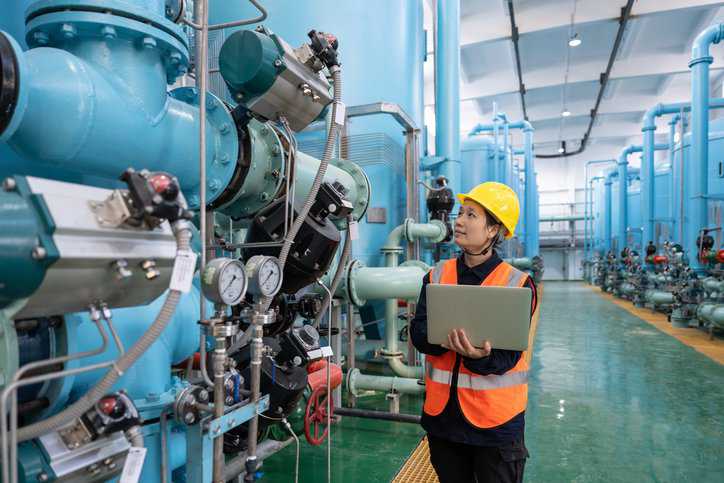The fundamental objectives of nuclear safety are the achievement of proper operating conditions and the prevention or mitigation of accident consequences, resulting in the protection of workers, the public, and the environment from undue radiation hazards. ANSI/ANS-20.2-2023: Nuclear Safety Design Criteria And Functional Performance Requirements For Liquid-Fuel Molten Salt Reactor Nuclear Power Plants provide nuclear safety design criteria for liquid-fuel molten salt reactor (MSR) nuclear power plants (NPPs).
What Is Nuclear Safety?
Nuclear power plants use fissile materials to produce energy in the form of heat, which is converted to electricity by conventional generating plant. From this process, radioactive materials are produced as a by-product. Although radioactive materials can have beneficial uses, such as in cancer therapy, they are generally harmful to health. As a result, their use and the process by which they are produced must be strictly regulated to ensure nuclear safety.
The safety of the nuclear power plant needs to be demonstrated throughout all stages of its entire lifetime, in particular before the loading of the nuclear fuel and the beginning of operation. This nuclear fuel lifetime cycle includes the extraction and enrichment of radioactive ores, the production of nuclear fuels, the transport and use of fuel in the operation of nuclear power plants, the reprocessing of spent fuel to recover reusable materials for more fuel, and the storage of nuclear waste. Nuclear safety therefore includes the management, design, construction, operation, and decommissioning of all nuclear installations. ANSI/ANS-20.2-2023 covers nuclear safety design provisions.
What Is ANSI/ANS-20.2?
ANSI/ANS-20.2-2023 provides nuclear safety design criteria for liquid-fueled molten salt reactor (MSR) nuclear power plants (NPPs) including those that produce nonelectrical forms of power. The design criteria enable developing reasonable assurance that liquid-fuel MSR NPPs are designed so that they can be operated without undue risk to public health and to the environment. Additionally, the design criteria described in this American National Standard is intended to enable MSR NPPs to achieve the quantitative safety goals of the U.S. Nuclear Regulatory Commission (NRC) and the NRC advanced reactor policy statement safety goals.
This standard is intended to be useful to both designers and regulators of MSR NPPs. In particular, ANSI/ANS-20.2-2023 will be especially useful to the NRC as it develops specific regulatory guidance for evaluating MSR NPP designs.
This standard does not address fissile material separations, plant security, or safeguards issues. Criteria for adequately executing construction and for safely operating and maintaining the nuclear plant are addressed only to the extent that they affect design provisions.
Safety Of Nuclear Reactors
There have been two major reactor accidents where a large amount of radioactive material was emitted in the history of civil nuclear power: Chernobyl (occurred in 1986 in the former Soviet Union) and Fukushima Daiichi (occurred in 2011 in Japan). Chernobyl involved an intense fire without provision for containment; Fukushima Daiichi severely tested the containment, allowing some release of radioactivity. Both of the accidents were starkly different in their cause.
The accident at Fukushima occurred after a series of tsunami waves struck the facility and disabled systems needed to cool the nuclear fuel. There were no explosions within the core; rather, progressive heating, oxidation, and meltdown of the cores occurred over a much longer period of time. The radioactive products were thus released from the core much more gradually. On the other hand, in Chernobyl, the release started with a nuclear criticality accident which triggered an in-core steam explosion. This caused an intensive ejection of the overheated core material and extensive burning of graphite and reactor materials over a long period of time. This accident at Chernobyl stemmed from a flawed reactor design and human error, releasing about 10 times the radiation that was released after the Fukushima accident.
While no industry is immune from accidents, all industries learn from them. The lessons we can still learn from Chernobyl and Fukushima include a radical review of the understanding of radiation protection and nuclear emergency issues. In the case of Fukushima, it prompted nuclear plant licensees and their regulators to actively seek out and act on new information about hazards that have the potential to affect the safety of nuclear plants. These lessons help authorities implement stricter and smarter nuclear safety measures and standards, such as ANSI/ANS-20.2-2023.
ANSI/ANS-20.2-2023: Nuclear Safety Design Criteria And Functional Performance Requirements For Liquid-Fuel Molten Salt Reactor Nuclear Power Plants is available on the ANSI Webstore.
